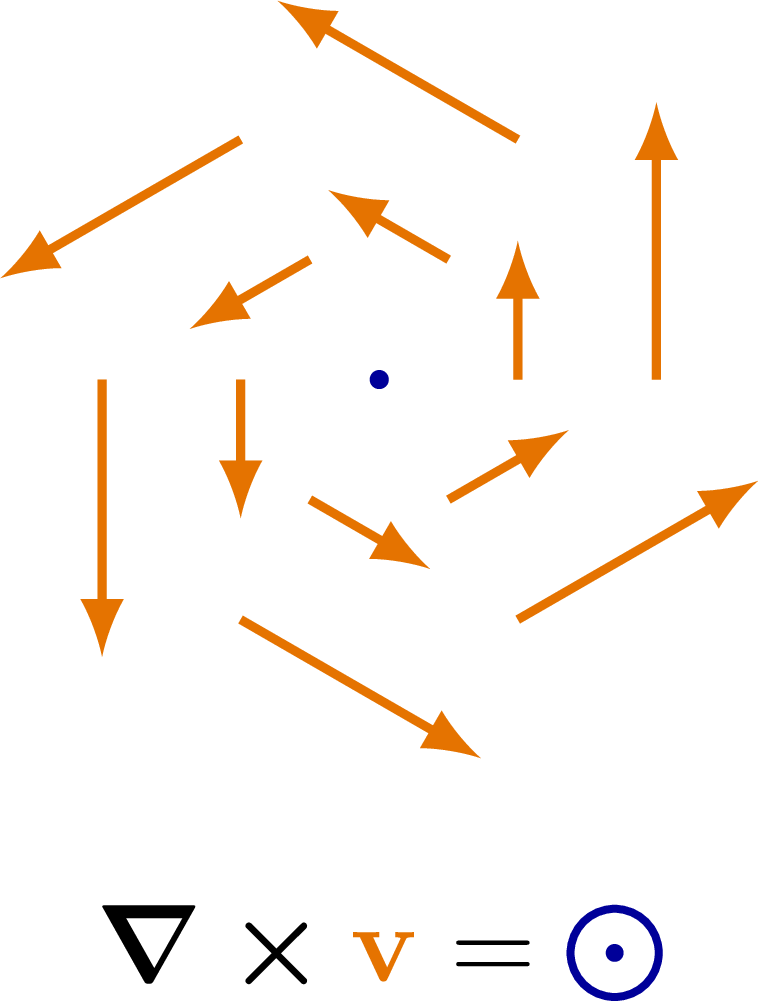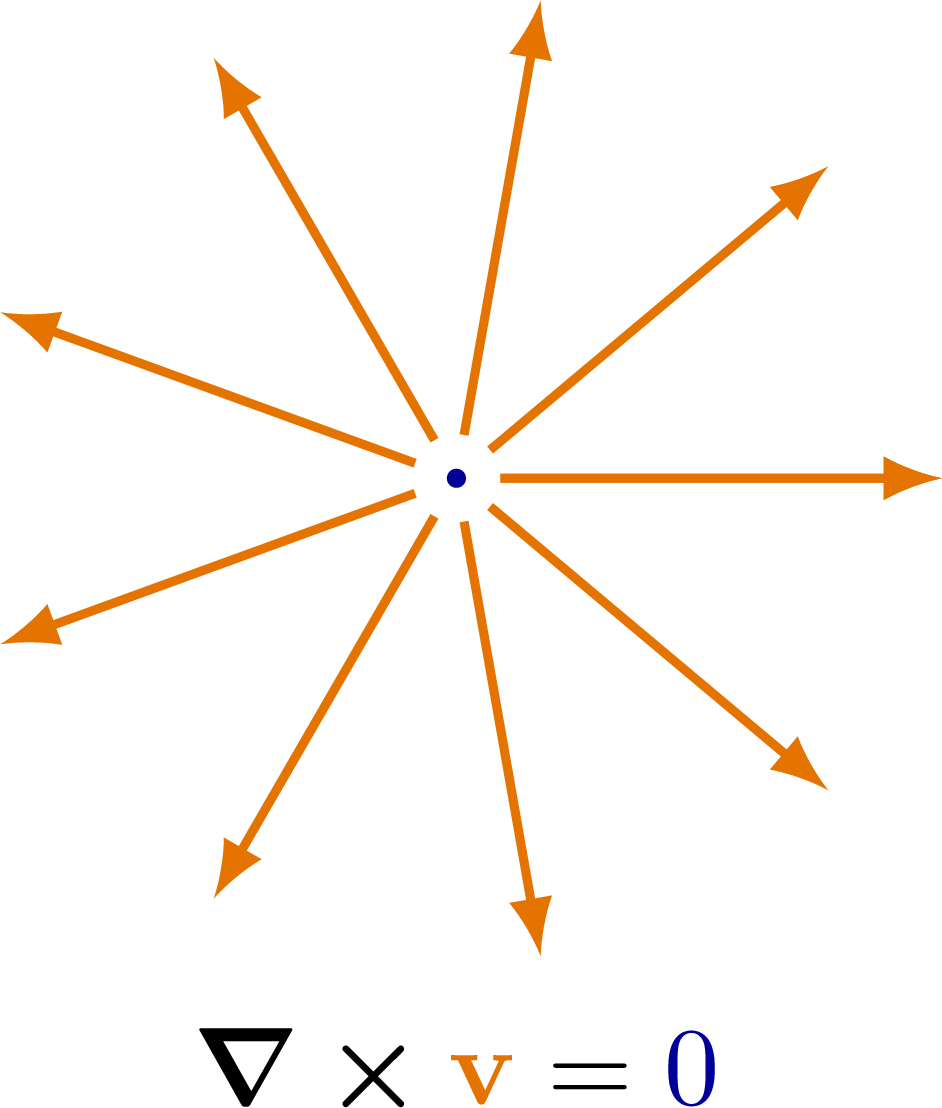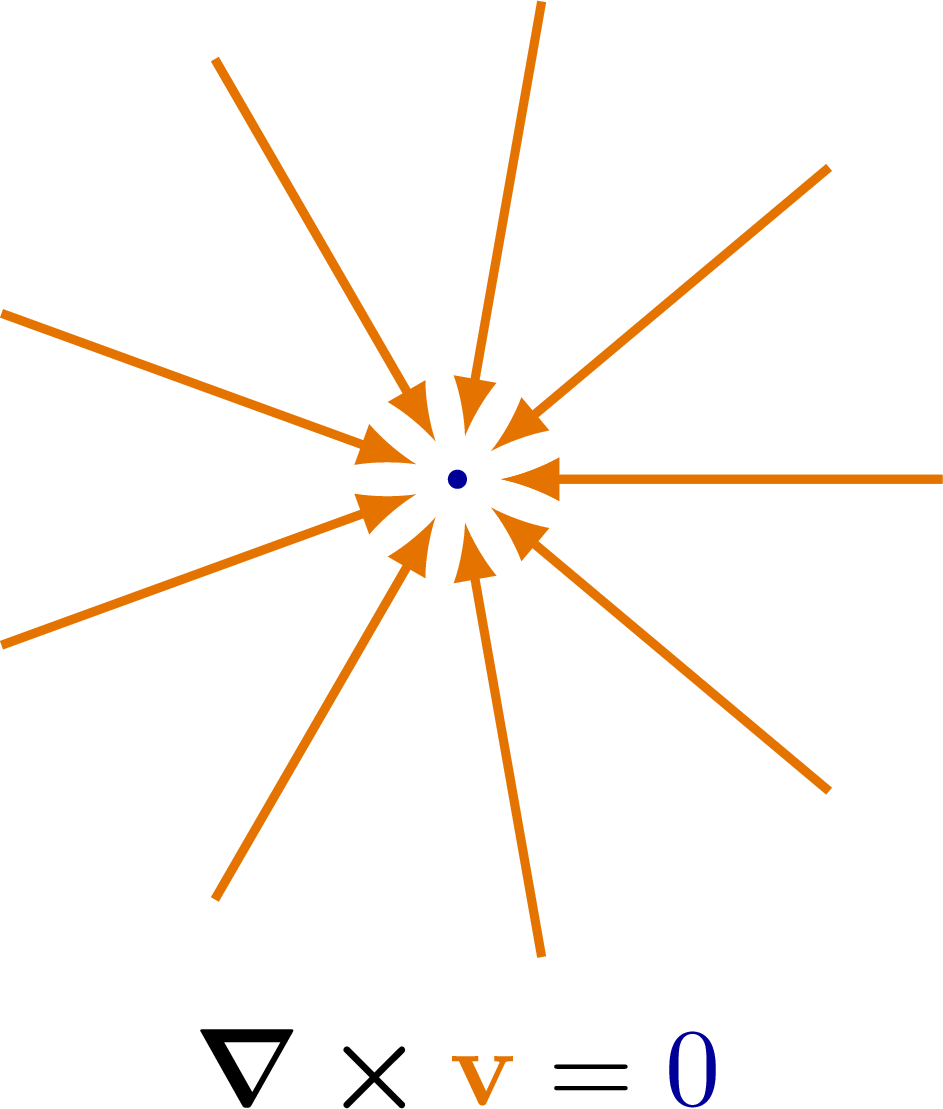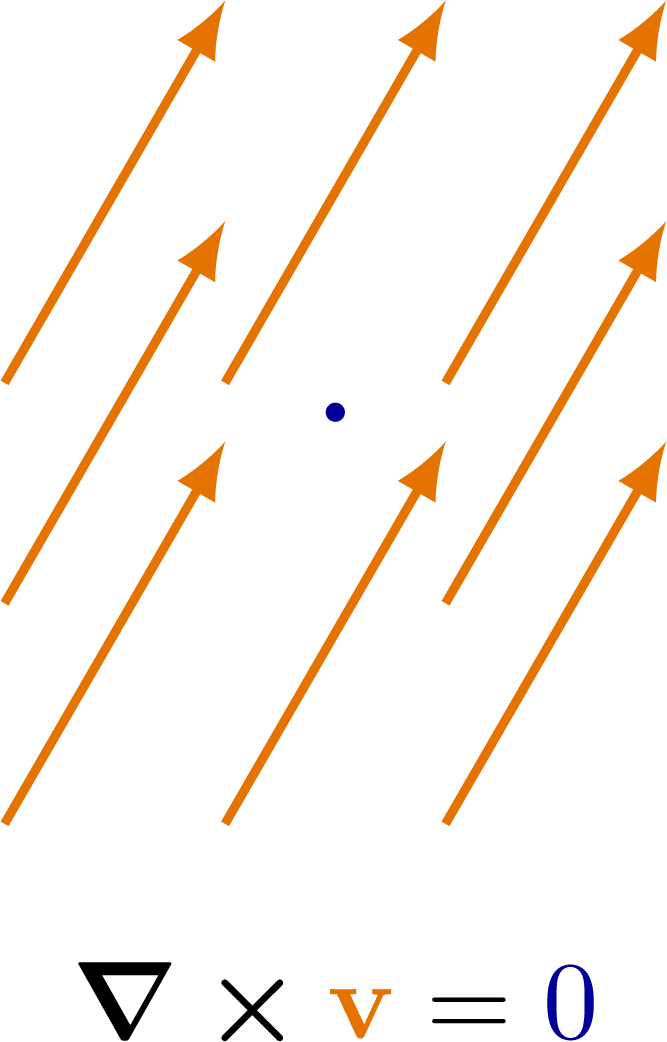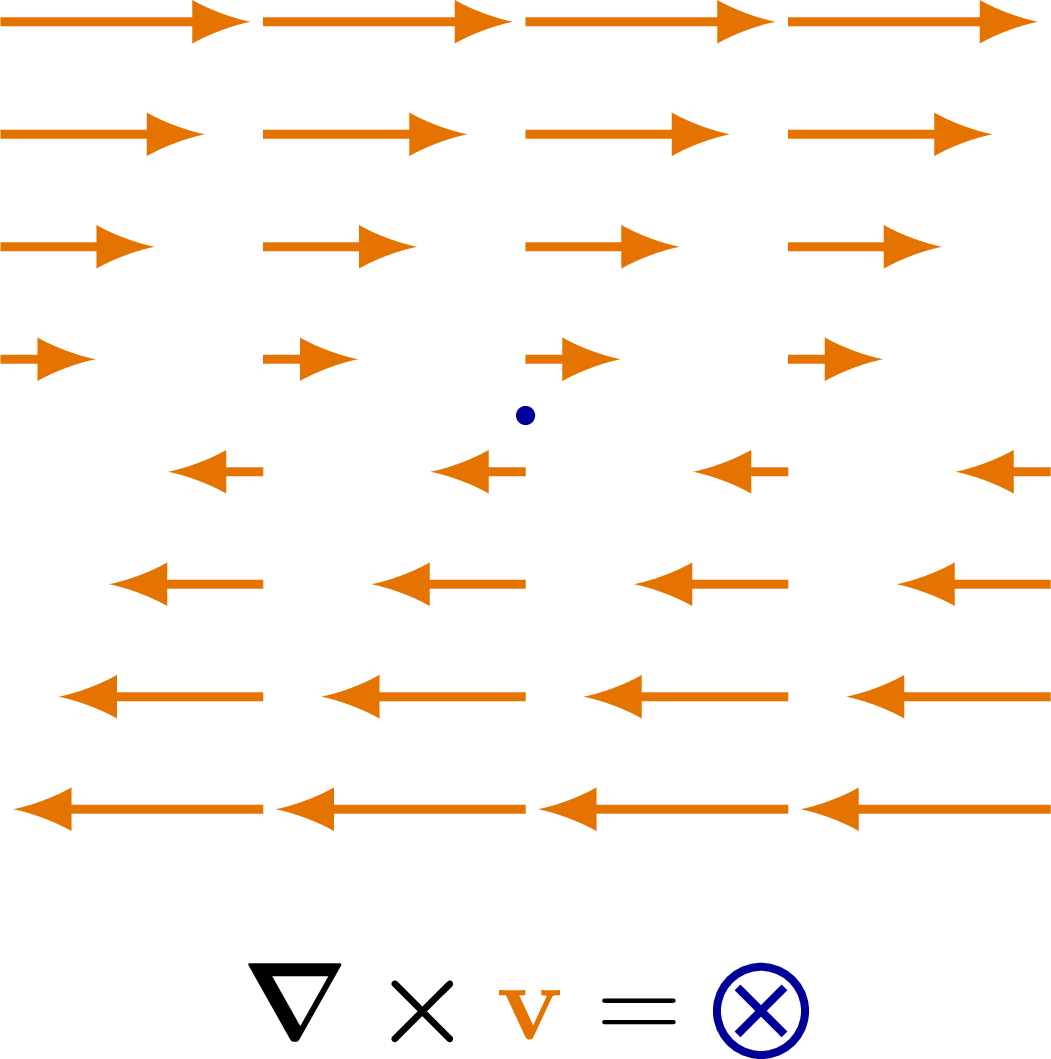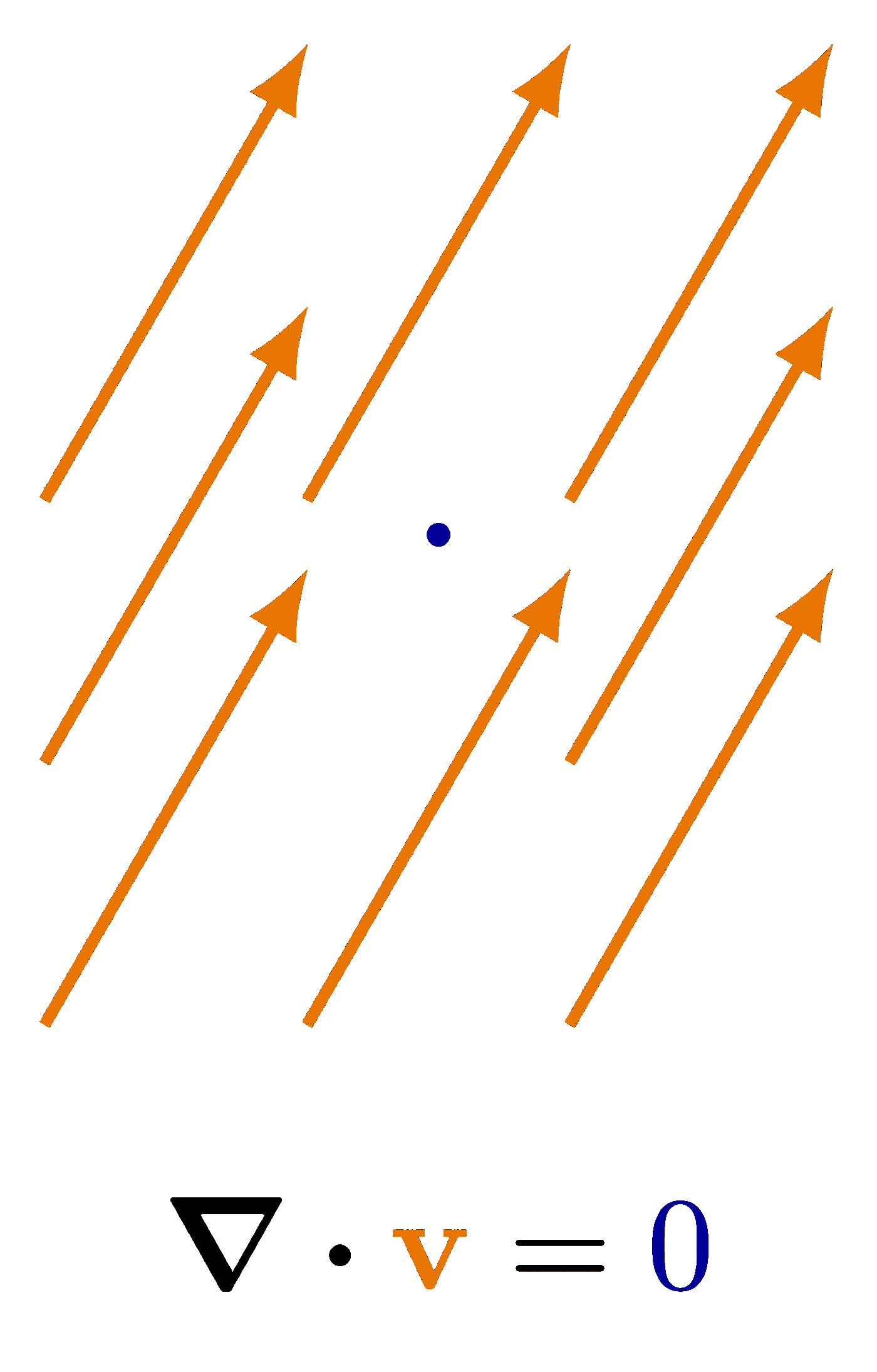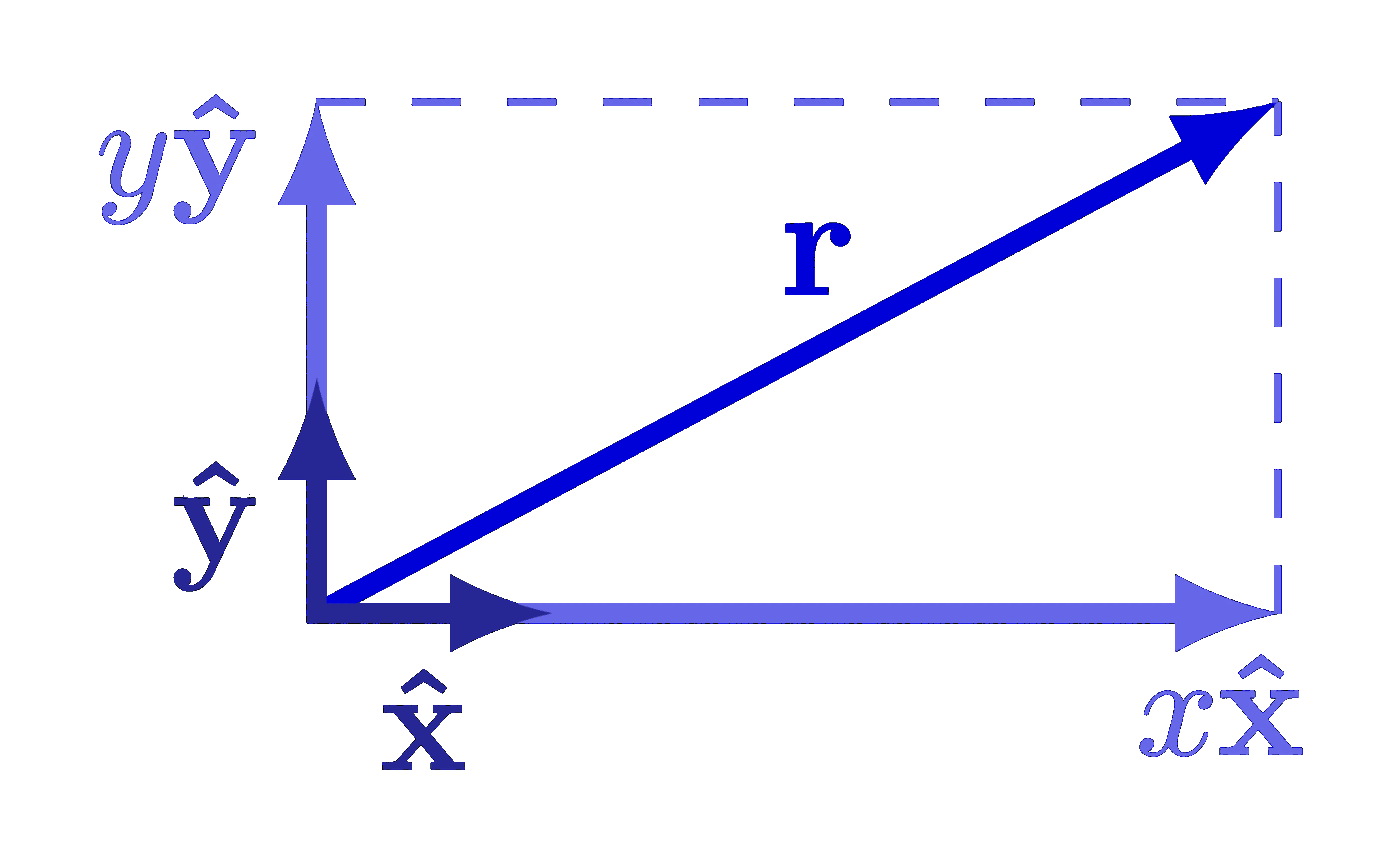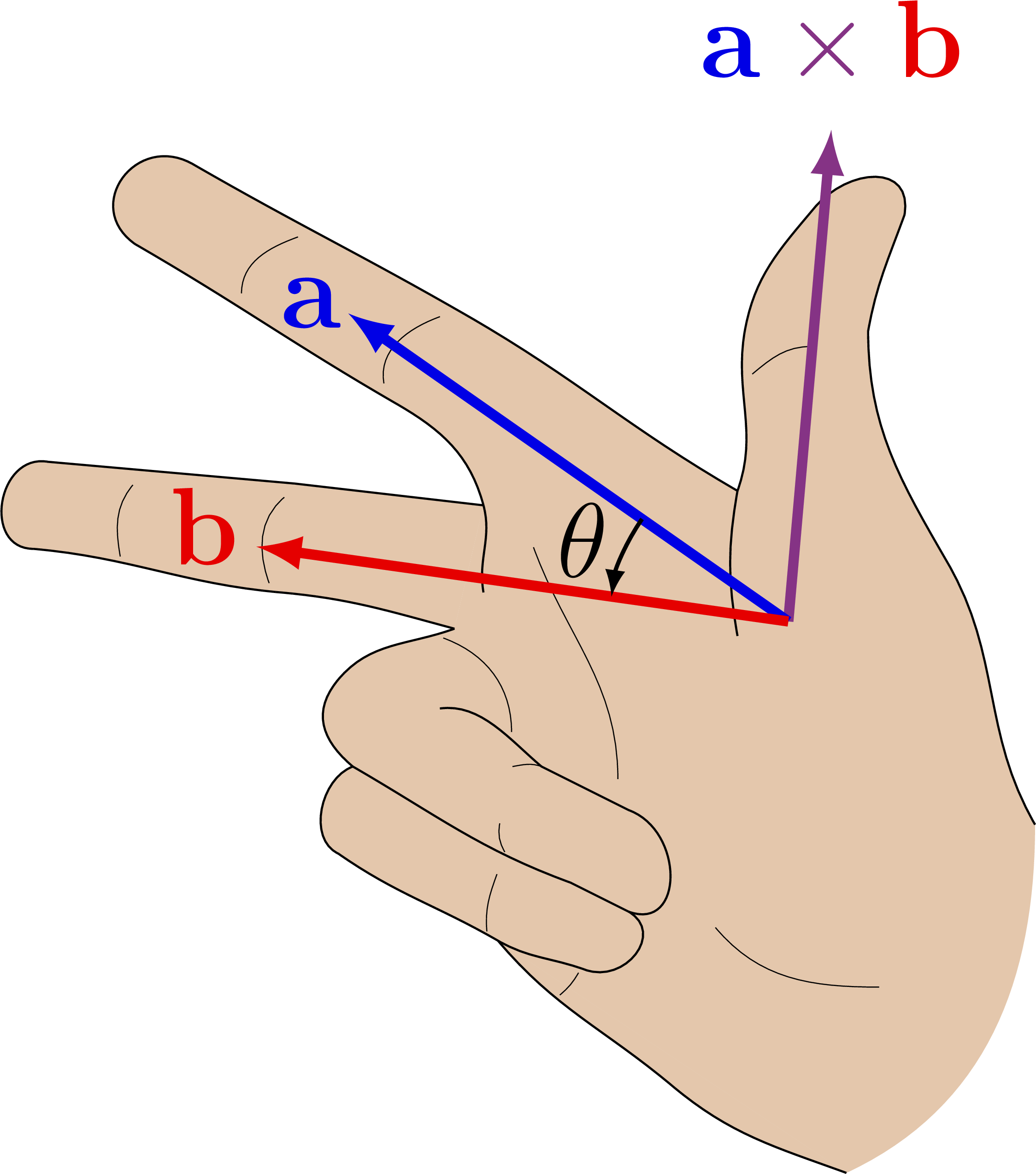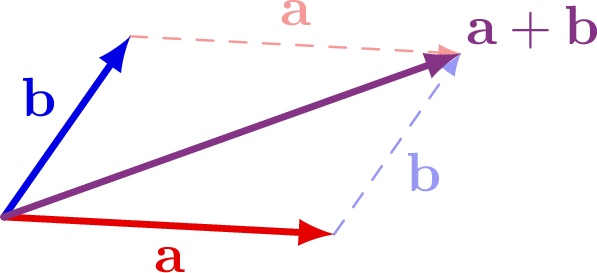The curl of some simple vector fields. Also see the divergence examples, or other figures under the “vectors” tag: the vector sum rule, scalar product, right-hand rule.
Edit and compile if you like:
% Author: Izaak Neutelings (Februari, 2020)\documentclass[border=3pt,tikz]{standalone}\usepackage{amssymb}\usepackage{physics}\usepackage{bm}\usepackage{tikz}\tikzset{>=latex} % for LaTeX arrow head\usepackage{xcolor}\colorlet{veccol}{orange!90!black}\colorlet{myblue}{blue!60!black}\tikzstyle{vector}=[->,thick,veccol]\def\R{1.4}\def\r{0.03}\def\N{9}%\bm{\odot}%otimes\def\RC{0.14}\def\Cout{\tikz[baseline=-2.5]{ \draw[line width=0.7,myblue] (0,0) circle (\RC);\fill[myblue] (0,0) circle (0.028); }}\def\Cin{\tikz[baseline=-2.5]{ \draw[line width=0.7,myblue] (0,0) circle (\RC)(-135:0.75*\RC) -- (45:0.75*\RC)(135:0.75*\RC) -- (-45:0.75*\RC); }}\def\null{\color{myblue}{0}}\begin{document}% ZERO - solenoid\begin{tikzpicture}\def\ang{60}\def\N{6}\fill[myblue] (0,0) circle (\r);%\foreach \x/\y in {-1/0,-1/1,0/1,1/1,1/0,-1/-1,0/-1,1/-1}{% \draw[vector] (\x*0.5*\R,\y*0.5*\R) --++ (-\y*0.2*\R,\x*0.2*\R);%}\foreach \R in {0.44,0.88}{\foreach \i [evaluate={\ang=\i*360/\N;}] in {1,...,\N}{\draw[vector] (\ang:\R) --++ (\ang+90:\R);
Click to download: curl.tex • curl.pdf
Open in Overleaf: curl.tex


